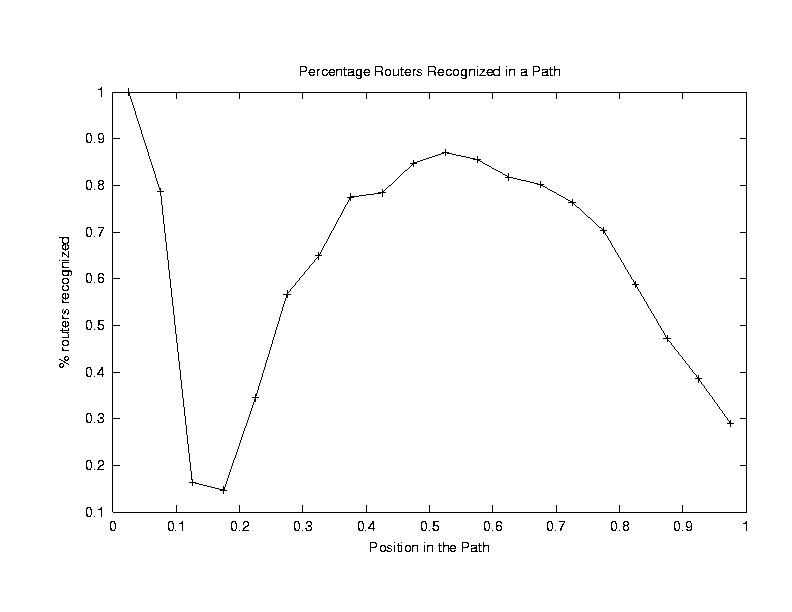



Next: Possible inaccuracies
Up: GeoTrack
Previous: GeoTrack
Coverage of GeoTrack
Of the 11,296 .net router names in our traceroute data set, 7842
were recognizable (approximately 70%). We compiled a list of 13 major
ISPs with nationwide backbones in the U.S. or with international
coverage: Sprintlink, AT&T, Cable and Wireless, Internet2, Verio,
BBNPlanet4, Qwest, Level3,
Exodus, PSINet, UUNET/Alter.net, VBNS, and Global Crossing. We found
that 5,966 of the 6,859 router names for these major ISPs were
recognizable (87%). In some individual cases, such as AT&T and
UUNET, the recognizability was in excess of 95%.
Figure 2:
The recognizability of router names as a function of the position of the router in the end-to-end path. The position is quantified by dividing the number of hops leading up to the router by the total number of hops end-to-end.
 |
By manual inspection, we found that a large chunk of the router names
which are unrecognizable by our tool have no meaningful codes to
decipher their locations. Many unrecognizable router names tend to be
concentrated in regional or campus networks. (For example,
cmu.psc.net is a node in Pittsburgh, PA. However, since it does not
contain a valid city or airport code, GeoTrack is unable to recognize
its location.5) Figure 2 shows
that recognizability is lowest close to the start and the end of the
path. (The peak corresponding to the very beginning of the path is due
to the source location always being known.) Thus most of the
unrecognizable nodes are typically located in the vicinity of the
source or the destination, so the resulting error in linearized
distance is minimal.
In the case of the 1995 data set, GeoTrack is able to recognize 1,289
out of 1,531 router names (approximately 84%). Interestingly, we
noticed a huge difference in the naming convention used in 1995 and
2000. Hence we needed to create a new set of codes for the 1995 data set.



Next: Possible inaccuracies
Up: GeoTrack
Previous: GeoTrack
Lakshminarayanan Subramanian
2002-04-14


